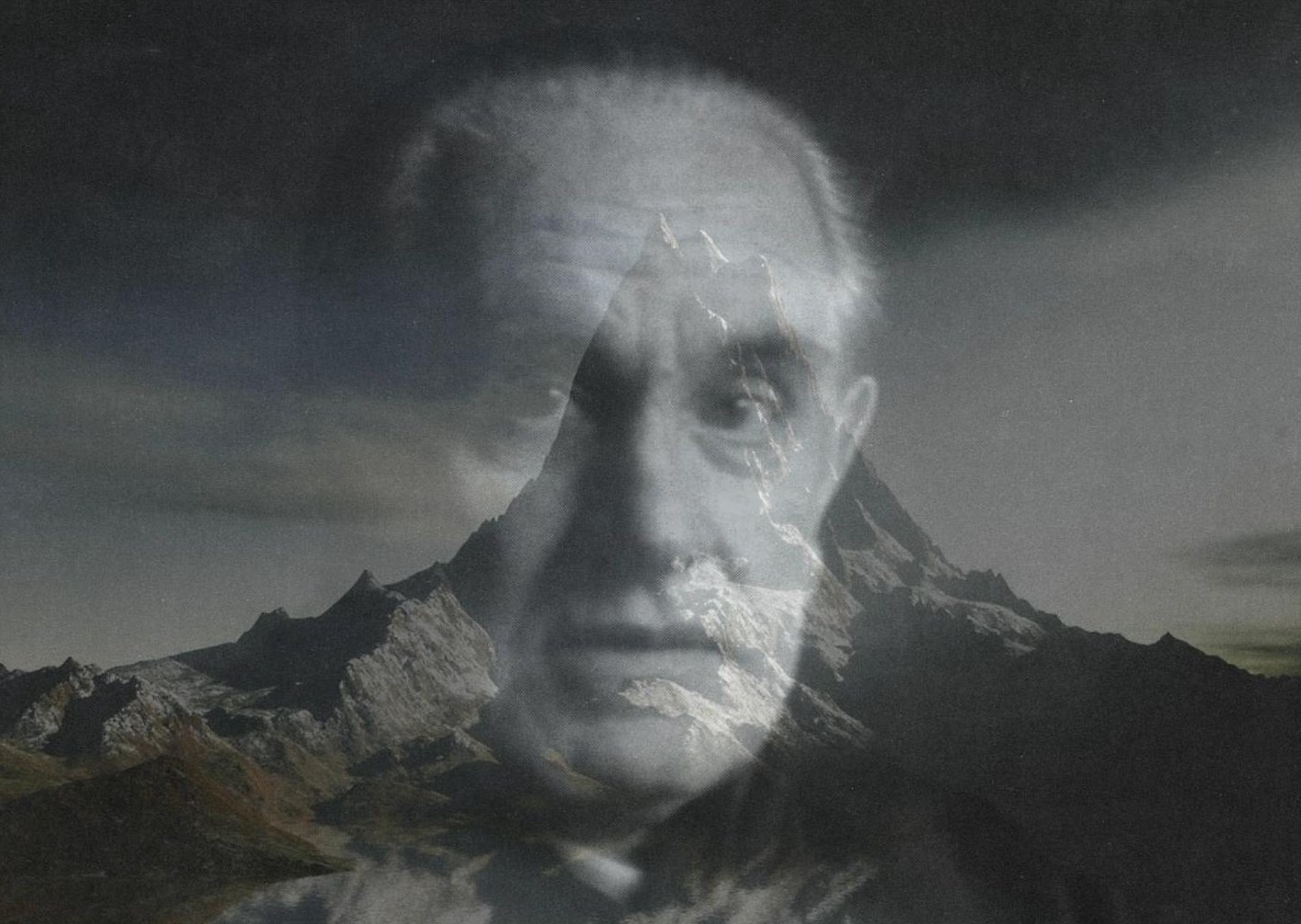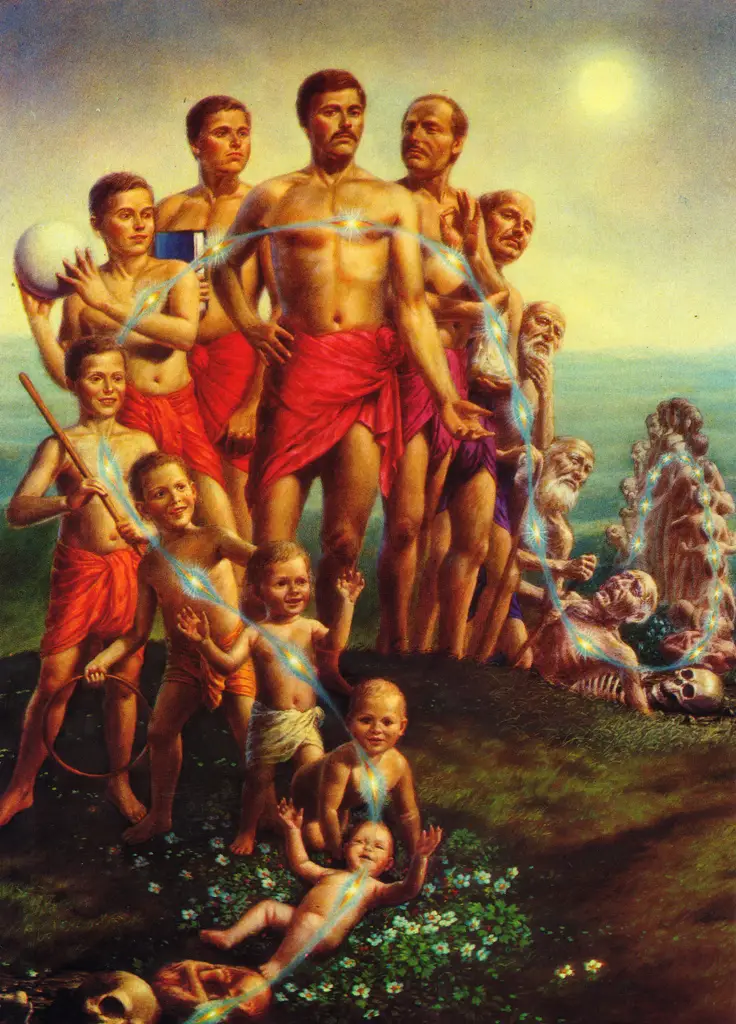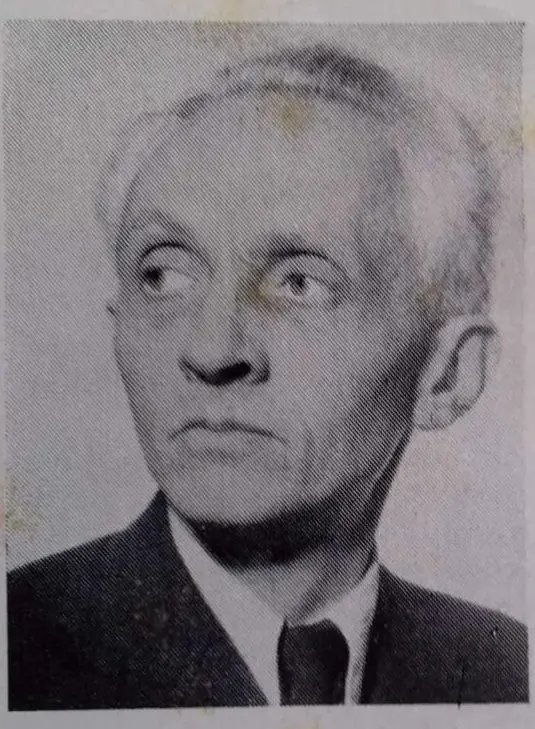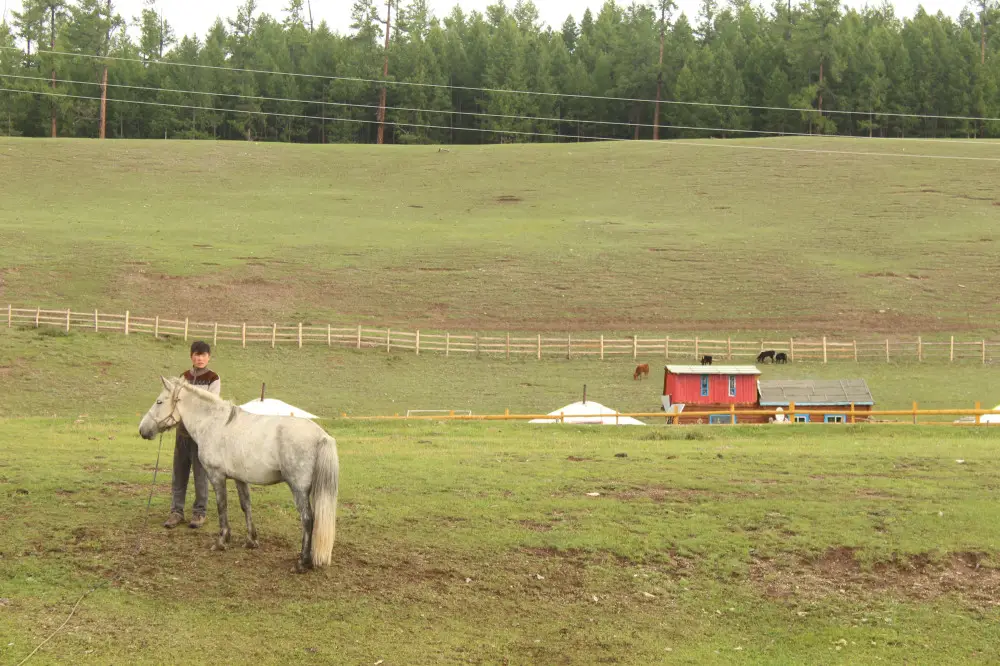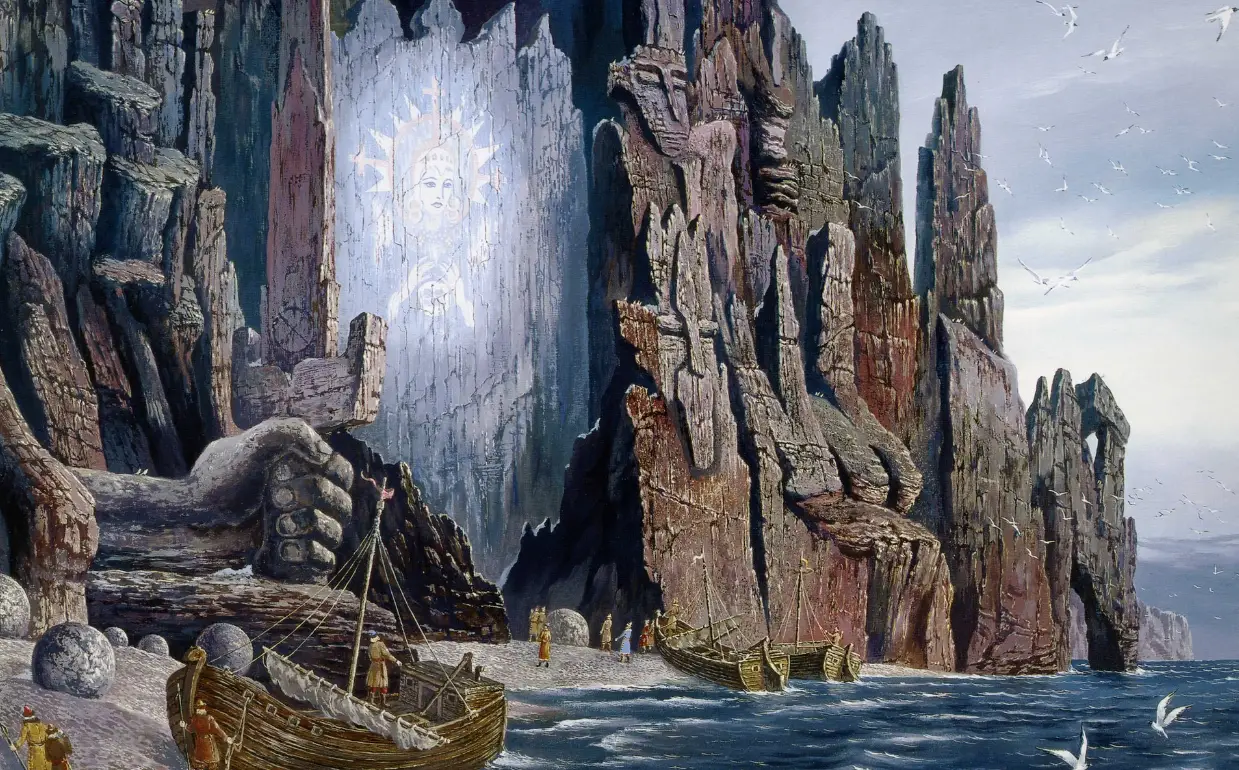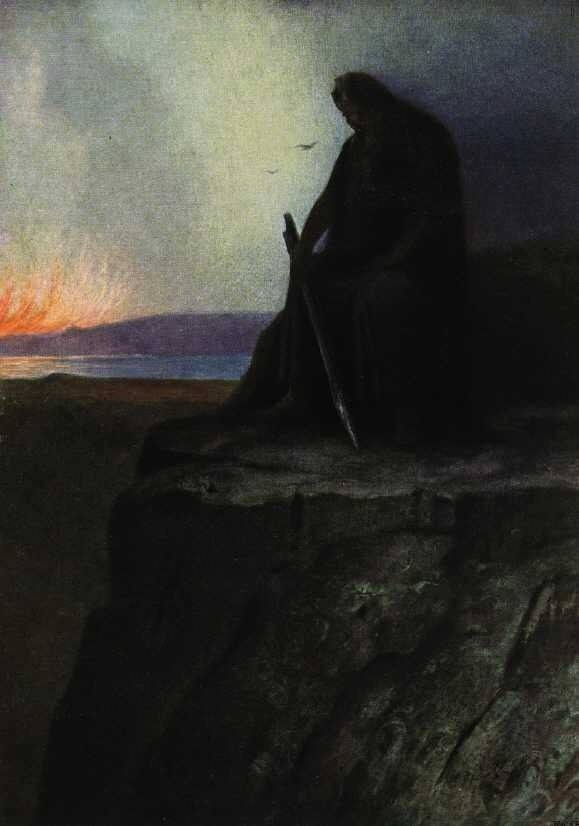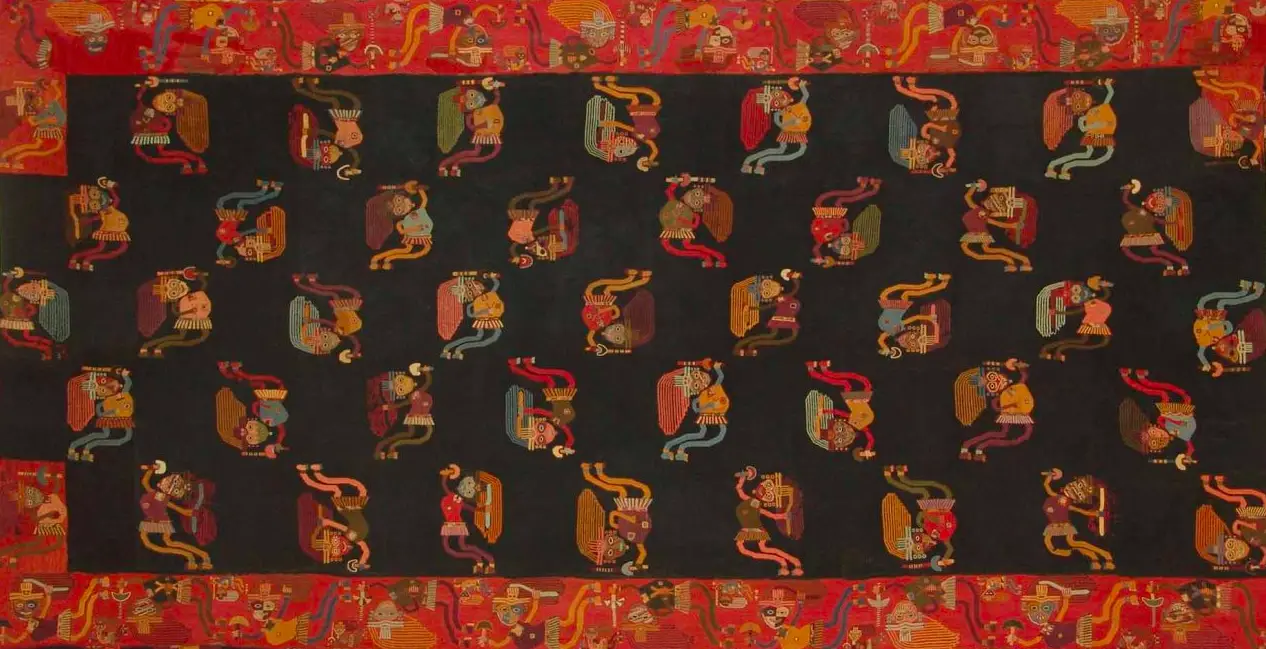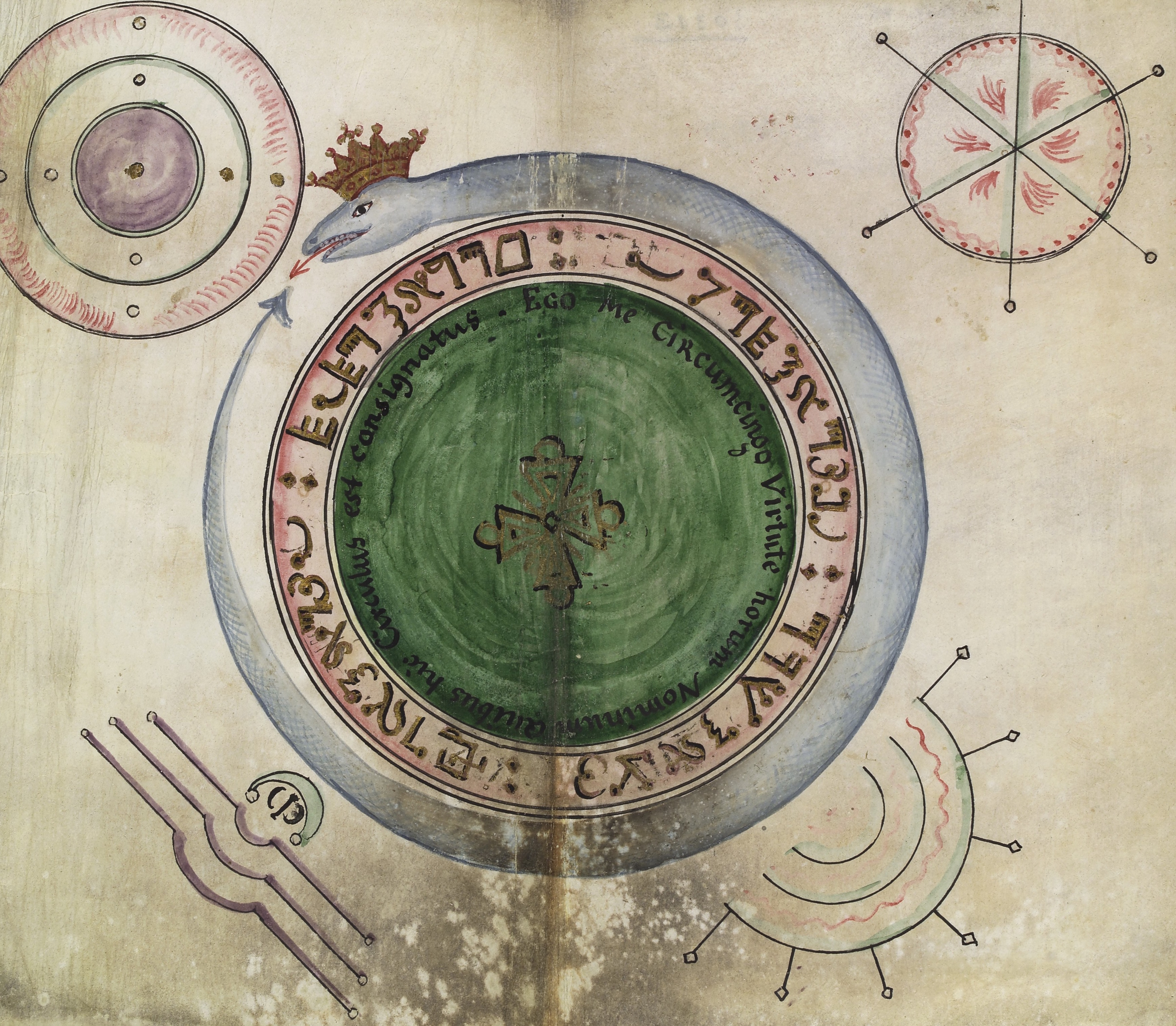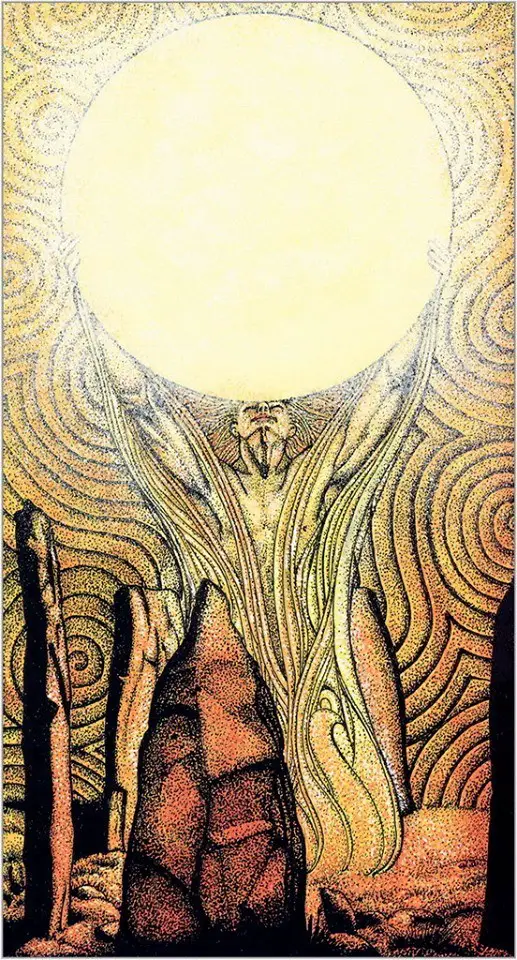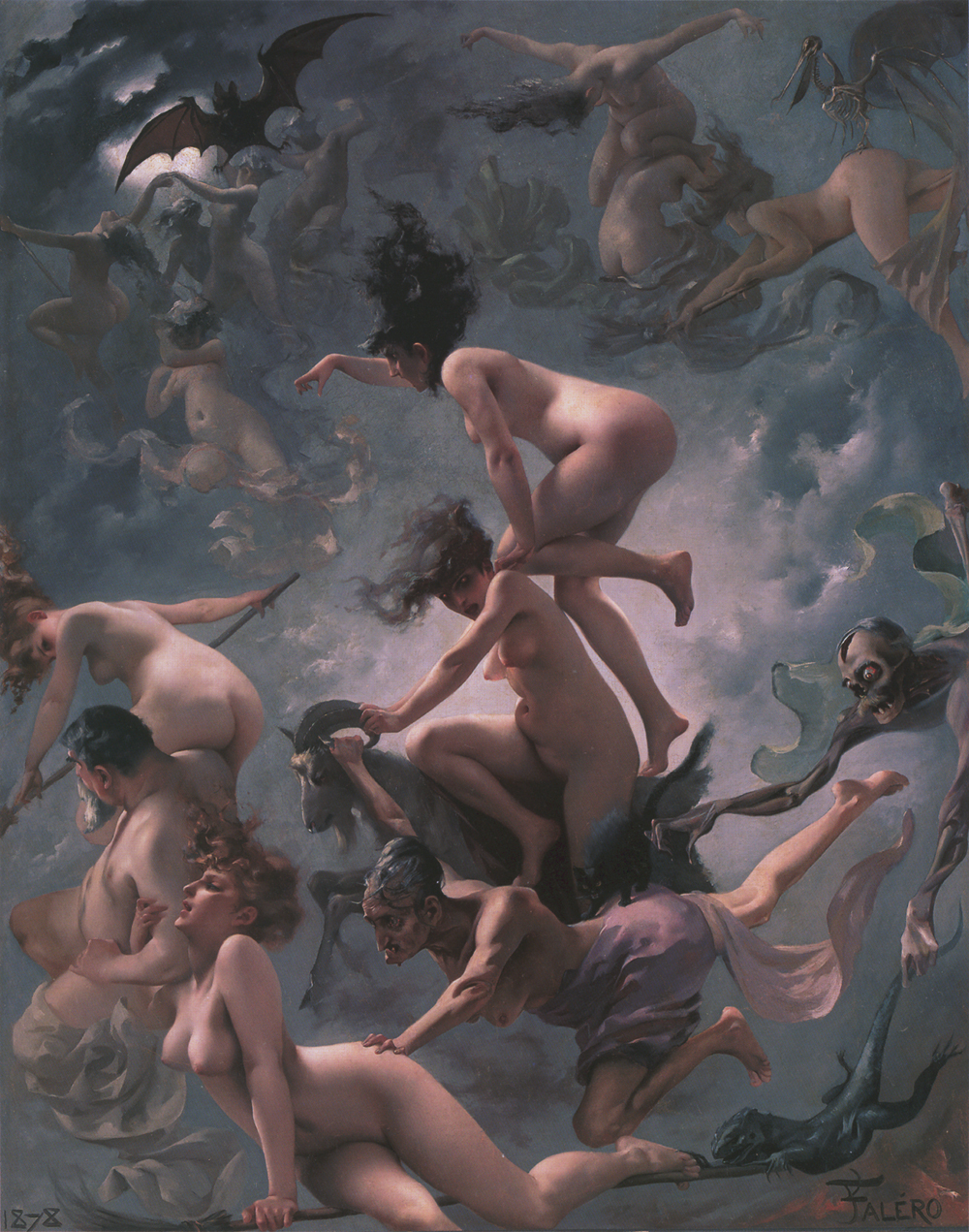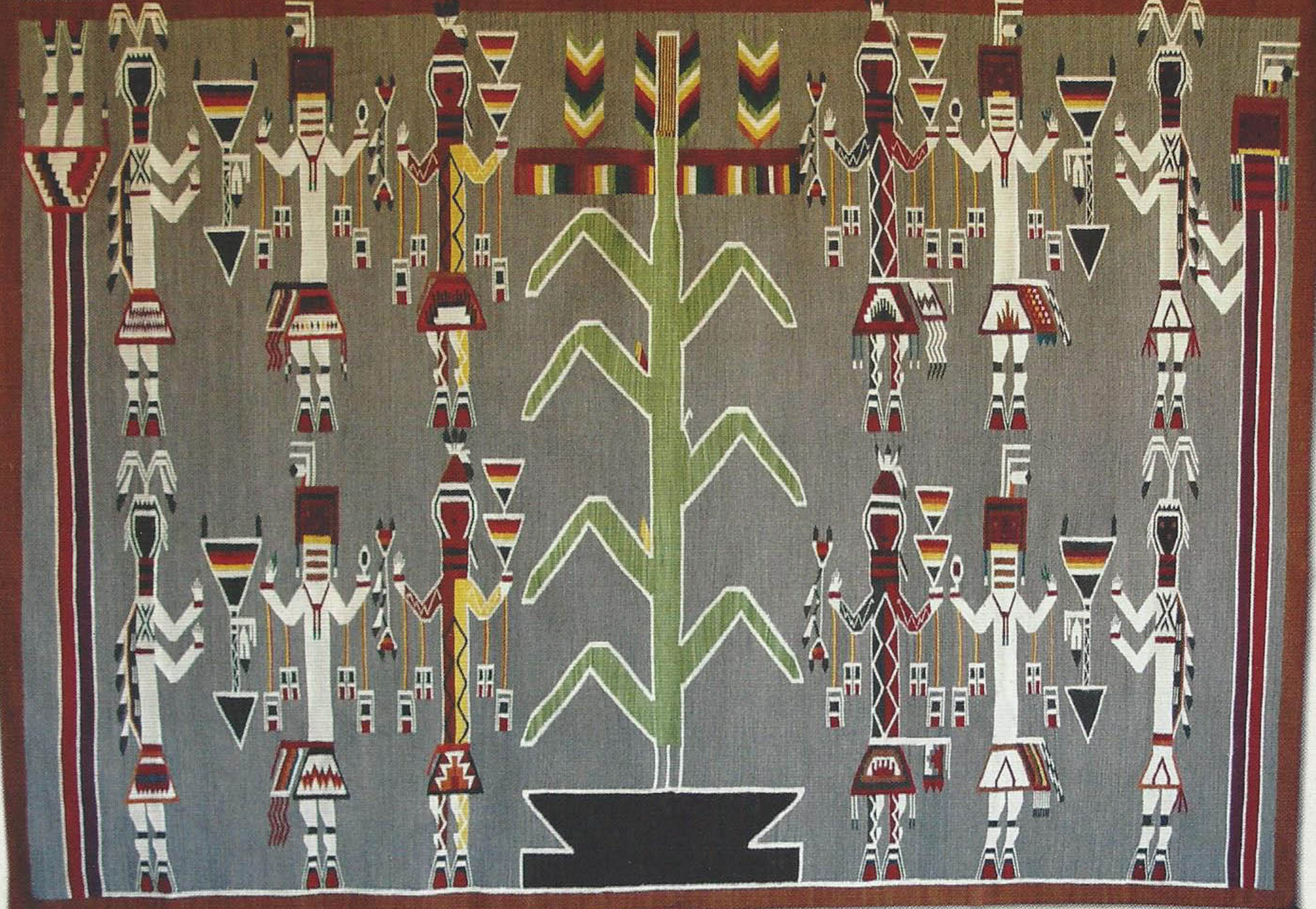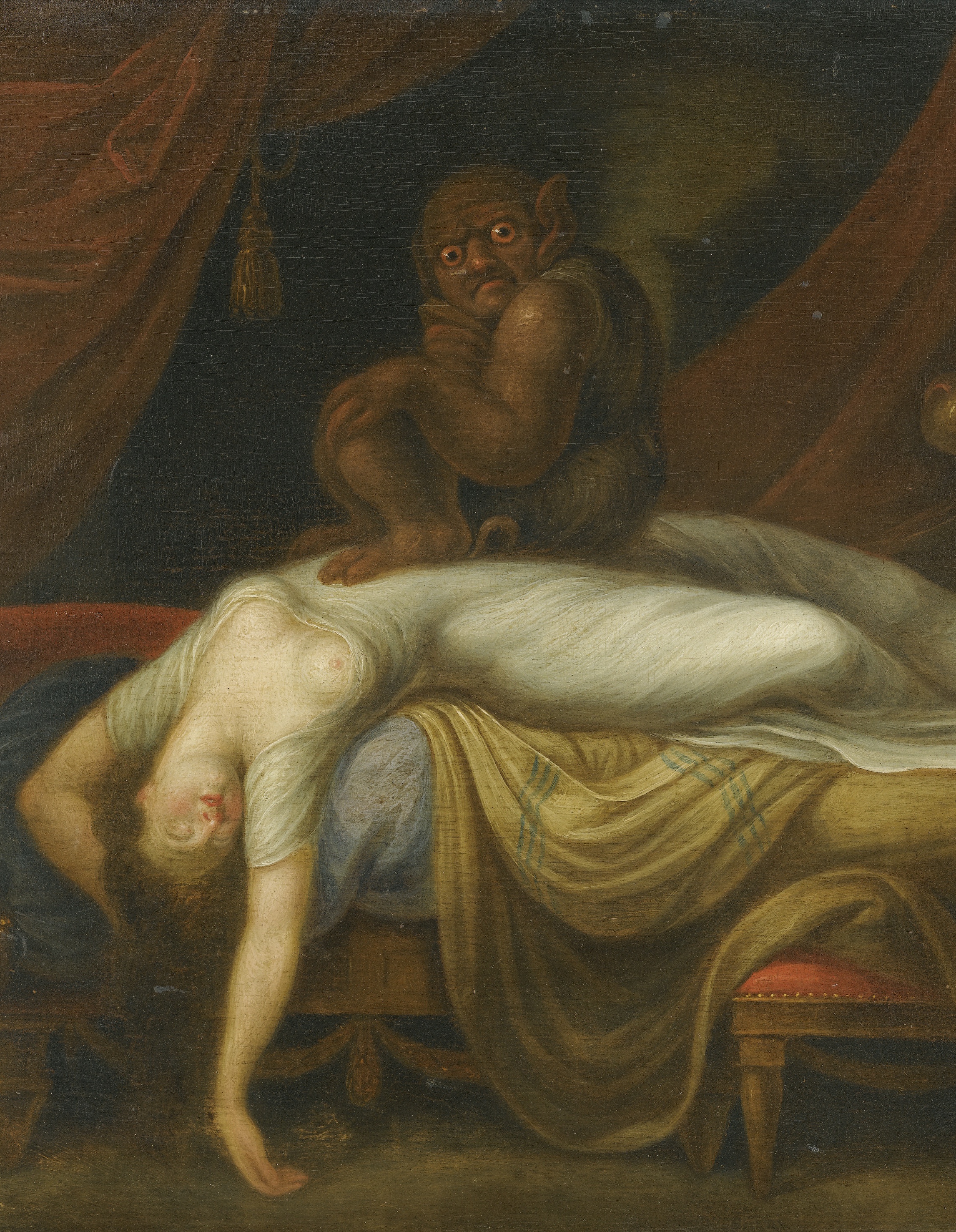Tag: Tradition
The lonely path of cinnabar
"Misunderstood by friends and enemies, he fought alone against the modern world": this obituary to Julius Evola highlights the 'Promethean-Luciferian' daimon that accompanied him throughout his entire earthly journey, making him a unique thinker in the panorama of ' 900, as clearly emerges from his most autobiographical work, "The journey of the cinnabar", recently reprinted by Edizioni Mediterranee.
The Eternal Man and the Cosmic Cycles
The specificity of man between evolutionary hypothesis and involutionary perspective: immersed in the cycles of the Cosmos, yet perennially equal to himself.
K. Kerényi: "The mythologem of timeless existence in ancient Sardinia"
Extract from the essay by Károly Kerényi "The mythology of timeless existence in ancient Sardinia ", adapted from Myths and Mysteries, and. Einaudi, Turin, 1950, pp. 413 - 423.
Travel photo reportage: Northern Mongolia (part II)
(follows from part I)
«Land of bare mountains, of plains heated by the sun and frozen by the cold, where the diseases of cattle and men, plague, anthrax and smallpox reign; land of hot springs and mountain passes guarded by demons, of sacred lakes teeming with fish; land of wolves, rare species of deer and mouflons, of millions of marmots, horses, donkeys and wild camels, all animals that have never known the bridle, land of ferocious dogs and birds of prey that devour the corpses that that people abandon in the plains: such is Mongolia.
Homeland of people who are disappearing and watch the calcined bones of their ancestors whiten in the sun, people who conquered China, Siam, northern India and Russia, and whose chests collided with the iron spears of the Polish knights who were defending then Christianity from the invasion of wild and nomadic Asia: such is Mongolia.
A land of great natural wealth that also produces nothing, needs everything, and seems to suffer from all the evils and cataclysms of the world: such is Mongolia. "
(FA Ossendowski, "Beasts, men, gods", chap. XVII, "Mysterious Mongolia")
Arctic homeland or "Mother Africa"?
di Michael Ruzzai
cover: Vsevolod Ivanov
Summary of the conference held on Friday 24 February 2017 at Trieste.
After the previous meeting on "The ancient roots of the Indo-Europeans"Of 27/1/2017 also this, which took place thanks to the organization of Daniele Kirchmayer, was introduced by the useful and interesting notes of Fabio Calabrese, who provided a first overview of the issues in question, insisting in particular on strong conformism, ideologically oriented, of current prehistoric research. In fact, as a starting point for the conference, we can certainly say that today the academic world, and also the popular one aimed at a wider audience, is based on two assumptions that tend to present themselves as real "dogmas "Of faith, in truth anything but demonstrated: the" ascending "evolutionism in a more general biological perspective, and the Afrocentrism of human origins in that more specifically concerning our species, Homo Sapiens. We will begin by exposing some points of criticism to these two conceptual a priori and then we will move on to illustrate the more properly constructive elements of the discourse.
Lupercalia: the cathartic celebrations of Februa
by Ascanio Modena Altieri
originally published on The Dissident Intellectual
The first rays of the civilization of Rome and of the Italian national myth begin their grandiose work among the districts of the Earth. The Palatine Hill is home to the she-wolf, the nurse, savior of the divine couple of infants from the waters of the Tiber and from the evil king of Alba Longa Amulio. On the slopes of the future Colle dei Principi, with tall oaks and fabulous woods, is the Lupercale, the mythical cave, home of the fatal fair, where the blood of the prey and the milk of the breasts mix in a combination of colors that, between a few centuries, it will become an imperishable ritual and celebratory imprint. However, aids to the auspicious destiny could not be delayed: the consanguineous shepherds, Faustulus and Plistinus, found the two nobles in swaddling clothes and, with the sacred consent of the feminine beast, decided to take the two to their hut on the hill, ready one day, to tell which most dignified blood is what gushes in their veins. In the beginning it was Acca Larenzia, wife of Faustolo, who took care of the children of the God Mars and of Rhea Silvia, in the house on the Palatine, until the two appropriated, in different ways, the already marked fate.
The enigma of Tiahuanaco, cradle of the Incas and "Island of Creation" in Andean mythology
by Marco Maculotti
For the purpose of the continuation of the analysis concerning the foundation myth by the Viracochas [cfr. Viracocha and the myths of the origins: creation of the world, anthropogenesis, foundation myths], it will now be useful to pause to produce some considerations on the importance in the Andean tradition of the ceremonial center of Tiahuanaco, "one of the most significant and disconcerting legacies of human prehistory" [Petratu and Roidinger, p.152], cradle of the first men of the "Fifth Sun" [cf. Pachacuti: cycles of creation and destruction of the world in the Andean tradition]. The origins of this monumental complex are lost in the mists of time: at the time of the conquest the Andes claimed to have never known the city if not in ruins; the Aymara, one of the most ancient peoples of the Andes, claimed that Tiahuanaco had been inhabited "from the first men of the Earth"[Charroux, p.52]. For these reasons, by virtue of its enigmatic nature, Tiahuanaco has always attracted the curiosity of historians and explorers. In 1876 the French archaeologist Wiener wrote [cit. in Charroux p.49]:
"A day will come when it will be possible to say about the classical civilization of the Pharaohs, the Chaldeans, the Brahmans: you are cataloged in our books as the most ancient, but science proves that the pre-Inca civilization of Tiahuanaco precedes yours by many thousands years. "
The archaic substratum of the end of year celebrations: the traditional significance of the 12 days between Christmas and the Epiphany
di Marco Maculotti
article originally published on Atrium on 21/12/2016,
here revised and expanded
Here we aim to deepen the folkloric beliefs that have led to the configuration of two figures intimately connected to the liturgical-profane calendar of Europe in recent centuries. The two figures that interest us are those of Santa Claus (Italianized in Santa Claus) and of the Befana, figures that - as we will see - owe their origin and their symbolism to an archaic substratum, anthropologically recognizable in all those practices and beliefs (myths and rites) of the volk European (or rather eurasian), which elsewhere we have defined as "cosmic-agrarian cults" [cf. Cosmic-agrarian cults of ancient Eurasia].
Divinity of the Underworld, the Afterlife and the Mysteries
di Marco Maculotti
We continue the discussion previously developed, taking it from the connection that we have seen to exist, in ancient traditions, between the period of the "solstitial crisis" and the belief in the return of the souls of the dead to the living. The connection with the underworld / underworld and with the Kingdom of the Dead seems, as we have seen, to be recurrent for these deities that we have defined as 'of the Winter Sun' [cf. Cernunno, Odin and other deities of the 'Winter Sun'], at the same time gods of fecundity and also linked to the underworld and, therefore, to the deceased.
We have already seen that the Celtic Cernunno, in addition to being a god of nature and time, is also considered an underworld deity, especially as regards his psychopomp function, as a companion of the dead in the afterlife: a mercurial aspect that in tradition Nordic is also found, as we have seen, in Odin / Wodan, from which in fact derives the day of the week which Latin belongs to Mercury (Wednesday= “Wodan's days"). Likewise, in many traditions from all over the world there are numinous figures connected both with fertility and with the Underworld and the Underworld, starting with the Mediterranean Lord of Hades Pluto, among whose symbols there is the cornucopia (*krn), conveying abundance, fertility, wealth.
Cernunno, Odin, Dionysus and other deities of the 'Winter Sun'
di Marco Maculotti
cover: Hermann Hendrich, "Wotan", 1913
[follows from: Cosmic cycles and time regeneration: immolation rites of the 'King of the Old Year'].
In the previous publication we had the opportunity to analyze the ritual complex, recognizable everywhere among the ancient Indo-European populations, centered on theimmolation (real or symbolic) of the "King of the Old Year" (eg. Roman Saturnalia), as a symbolic representation of the "Dying Year" that must be sacrificed to ensure that the Cosmos (= the order of things), reinvigorated by this ceremonial action, grants the regeneration of Time and of the 'World' (in the Pythagorean meaning of Kosmos like interconnected unit) in the new year to come; year which, in this sense, becomes a micro-representation of the Aeon and, therefore, of the entire cyclical nature of the Cosmos. Let's now proceed toanalysis of some divinities intimately connected with the "solstitial crisis", to the point of rising to mythical representatives of the "Winter Sun" and, in full, of the "King of the Waning Year": Cernunno, the 'horned god' par excellence, as far as the Celtic area is concerned; Odin and the 'wild hunt' for the Scandinavian one and Dionysus for the Mediterranean area.
Cosmic cycles and time regeneration: immolation rites of the 'King of the Old Year'
di Marco Maculotti
Mircea Eliade wrote that "the main difference between the man of archaic and traditional societies and the man of modern societies, strongly marked by Judeo-Christianity, consists in the fact that the former feels solidarity with the cosmos and cosmic rhythms, while the second is considered in solidarity only with history "[Eliade (1), p.5]. This "cosmic life" is connected to the microcosm by a "structural correspondence of planes arranged in hierarchical order" which "together constitute the universal harmonic law in which man is integrated" [Sanjakdar, p.155].
Archaic man especially took into consideration the solstices and equinoxes, as well as the dates between them: it was believed that in these particular days, which marked the passage from one phase of the cycle to the next of the "wheel of the year", the energy of the cosmos flowed more freely, and therefore they chose such dates to perform their own rituals. Here we are especially interested in certain dates between the Winter Solstice and the Spring Equinox, that is to say the calendar phase in which the Sun appears die: the so-called "solstice crisis" or "winter crisis".
Pachacuti: cycles of creation and destruction of the world in the Andean tradition
di Marco Maculotti
cover: Paracas culture textiles (coastal Peru)
A central concept in the Andean cosmogonic tradition is the belief in regular cycles of creation and destruction that would initiate and end the various cosmic eras. Time was conceived in a circular way; according to this doctrine, it had only two dimensions: the present (Kay Pasha) which at its end leads to the "ancient time"(Nawpa Pacha), from which we will return again to the present time [Carmona Cruz p.28].
This doctrine, comparable to that of the Indian Yuga and to the Hesiodic one of the ages, is based on a principle of cyclicality that would govern everything in the cosmos and which is called by the Andean tradition pachacuti, literally "a revolution, a procession of space and time". With this term, in the myths, a series of catastrophic events are described that foresee the general destruction of the humanity of the sky and its subsequent replacement with a new humanity - see the myths of origin of Lake Titicaca, in which it is said that Viracocha exterminated a previous race of giants with the flood or with a rain of fire to then create a subsequent humanity, the current one [cf. Viracocha and the myths of the origins: creation of the world, anthropogenesis, foundation myths].
The doctrine of the Eternal Return of the same: from Berosus to Eliade
di Marco Maculotti
Like the same Nietzsche had to recognize in Ecce Homo, the doctrine of the Eternal Return of the same was inspired by the reading of some philosophers of the Stoic current, in particular Zeno of Citium and Cleante of Ace. However, it is probably up to the Chaldean Berosus the first enunciation reached us in the Western context of the doctrine of the "Great Year" and the Eternal Return: the universe is considered as eternal, but it is annihilated and reconstituted periodically every "Great Year" (the corresponding number of millennia varies from one school to another); when the seven planets come together in the sign of Cancer ("Winterfell", the winter solstice of the "Great Year") a deluge will occur; when they meet in the sign of Capricorn ("Great Summer", summer solstice of the "Great Year") the whole universe will be consumed by fire [Eliade 116-7].
The festival of Lughnasadh / Lammas and the Celtic god Lugh
In ancient times, among the Celtic populations, at the beginning of August Lughnasadh / Lammas was celebrated, the festival of the first harvest, established according to the myth by the god Lugh himself. An analysis of the functions of the latter will allow us to highlight its remarkable versatility and correspondences with other divinities of the Indo-European traditions (such as Apollo, Belenus and Odin) and even with two divine powers of the Judeo-Christian tradition apparently opposed to each other. : Lucifer and the archangel Michael.
Metamorphosis and ritual battles in the myth and folklore of the Eurasian populations
di Marco Maculotti
The zoomorphic metamorphosis topos is widely present in the folkloric corpus of a large number of ancient traditions, both from archaic Europe (on which we will focus mainly in this study), and from other geographical areas. As early as the fifth century BC, in Greece, Herodotus mentioned men capable of periodically transforming themselves into wolves. Similar traditions have been documented in Africa, Asia and the American continent, with reference to the temporary metamorphosis of human beings in fairs: bears, leopards, hyenas, tigers, jaguars. Sometimes, in some historically documented cases of the ancient world (Luperci, Cinocefali, Berserker) "The paranormal experience of transformation into an animal takes on collective characteristics and is at the origin of initiatory groups and secret societies" (Di Nola, p.12).
The Friulian benandanti and the ancient European fertility cults
di Marco Maculotti
cover: Luis Ricardo Falero, “Witches going to their Sabbath", 1878).
Carlo Ginzburg (born 1939), a renowned scholar of religious folklore and medieval popular beliefs, published in 1966 as his first work The Benandanti, a research on the Friulian peasant society of the sixteenth century. The author, thanks to a remarkable work on a conspicuous documentary material relating to the trials of the courts of the Inquisition, reconstructed the complex system of beliefs widespread up to a relatively recent era in the peasant world of northern Italy and other countries, of Germanic area, Central Europe.
According to Ginzburg, the beliefs concerning the company of the benandanti and their ritual battles against witches and sorcerers on the Thursday nights of the four tempora (Her hand, imbol, Beltain, Lughnasad), were to be interpreted as a natural evolution, which took place far from the city centers and from the influence of the various Christian Churches, of an ancient agrarian cult with shamanic characteristics, widespread throughout Europe since the Archaic age, before the spread of the Jewish religion - Christian. Ginzburg's analysis of the interpretation proposed at the time by the inquisitors is also of considerable interest, who, often displaced by what they heard during interrogation by the benandanti defendants, mostly limited themselves to equating the complex experience of the latter with the nefarious practices of witchcraft. Although with the passing of the centuries the tales of the benandanti became more and more similar to those concerning the witchcraft sabbath, the author noted that this concordance was not absolute:
"If, in fact, the witches and sorcerers who meet on Thursday night to give themselves to" jumps "," fun "," weddings "and banquets, immediately evoke the image of the sabb - that sabb that the demonologists had meticulously described and codified, and the inquisitors persecuted at least since the mid-400th century - nonetheless exist, among the gatherings described by benandanti and the traditional, vulgate image of the diabolical sabbath, evident differences. In these cEverywhere, apparently, homage is not paid to the devil (in whose presence, indeed, there is no mention of it), faith is not abjured, the cross is not trampled, there is no reproach of the sacraments. At the center of them is a dark ritual: witches and sorcerers armed with sorghum reeds who juggle and fight with benandanti provided with fennel branches. Who are these benandanti? On the one hand, they claim to oppose witches and sorcerers, to hinder their evil designs, to heal the victims of their hexes; on the other hand, not unlike their presumed adversaries, they claim to go to mysterious nocturnal gatherings, of which they cannot speak under pain of being beaten, riding hares, cats and other animals. "
—Carlo Ginzburg, "I benandanti. Witchcraft and agrarian cults between the sixteenth and seventeenth centuries», Pp. 7-8
The "myths of emergence" in the traditions of Native Americans
di Marco Maculotti
According to many mythical traditions, in the beginning the first members of the human race were generated in the bowels of the Earth, within underground worlds similar to cavernous wombs. The myths of emergence, particularly prevalent among Native American populations, provide us with the best examples of such subterranean realms. The mythical tales tell of how the first humans were brought to the surface to live in the sunlight only after they remained for a long time under the earth's surface, in the - so to speak - "larval" state, and after developing a rudimentary physical form. and a human conscience. According to native peoples, this emergence from the underworld marks the birth of man in the present era - or, to use a typical American term, the "Fifth Sun" - and also represents the transition from childhood and dependence on womb of Mother Earth to maturity and independence.
The phenomenon of sleep paralysis: folkloric interpretations and recent hypotheses
di Marco Maculotti
cover: Johann Heinrich Füssli, Nightmare
Sleep paralysis, also called hypnagogic hallucination, is a sleep disorder in which, between sleep and wakefulness (therefore in the moment before falling asleep or in the instant before waking up) one suddenly finds himself unable to move. Most of the time, according to what those who suffer from this disorder say, the paralysis begins with a tingling sensation that goes through the body, reaching the head, inside which the subject feels a kind of hum "like a swarm of bees ”or a sound similar to that of a washing machine or a“ thumping and screeching of metal objects ”. Often the victim of this experience tries to scream for help, managing at best to whisper faintly, also experiencing the unpleasant sensation of hearing his own voice suffocated by something abnormal.
Often, if the victim is in bed with someone, the latter cannot notice anything, to the point that often even the most disturbing phenomena (terrifying sounds and noises, incomprehensible voices, sometimes even strange unnatural lights coming from outside) succeed to arouse the attention of those who do not undergo the episode in first person. It can also happen that the succubus (which, if once the name for the mysterious entity causing the phenomenon, is now the term by which medical science refers to the 'victim') hears familiar voices - or, sometimes, even 'demonic' - calling him, or arguing with each other behind the subject's back or, worse still, whispering close to his neck, often from behind, in a disturbing voice.
Science believes that this abnormal state is due to the persistence of the state of atony that the muscles present during sleep and is caused by a discrepancy between the mind and the body: with the consequence that, although the brain is active and conscious and the subject can often see and perceive clearly what surrounds him, despite this the body remains in a state of absolute rest, to the point that any movement is precluded for the duration of the experience. Of course, science denies the reality of the experiences experienced during this mysterious experience, reducing them to mere hallucinations caused by equally mysterious alterations in the subjects' brain balance, which would occur at the exact moment of the transition between wakefulness and sleep — and vice versa.
Enigmas of the Mediterranean: the Guanches, the 'Peoples of the Sea' and Atlantis
An attempt at classification (cultural, anthropological and genetic) of the mysterious population of the Guanches, ancient inhabitants of the Canaries, and a look at the Hellenic myths concerning the "Fortunate Islands" and the 'mythical' war against Atlantis
The primordial and triple god: esoteric and iconographic correspondences in ancient traditions
di Marco Maculotti
In ancient traditions around the world we find reference to a god of origins, who came into existence before all else, creator of all that is manifest and equally of all that is unmanifest. The most disparate mythical traditions depict the primordial god as containing all the potentials and polarities of the universe, light and darkness, spirit and matter, and so on. For this reason, he is often represented with two faces (two-faced Janus) or even with three (Trimurti Hindu). However, more often than not he is considered invisible, hidden, difficult to represent except in an allegorical, esoteric form, which often refers to the union of the luminous and fiery principle, 'masculine', with the dark and aqueous, 'feminine' . In the traditions of the whole world, this primordial god is not honored with a cult of his own, since it is believed that he now lives too far from man and human affairs do not concern him: for this reason, this maximum deity is often spoken of as of a deus otiosus.


